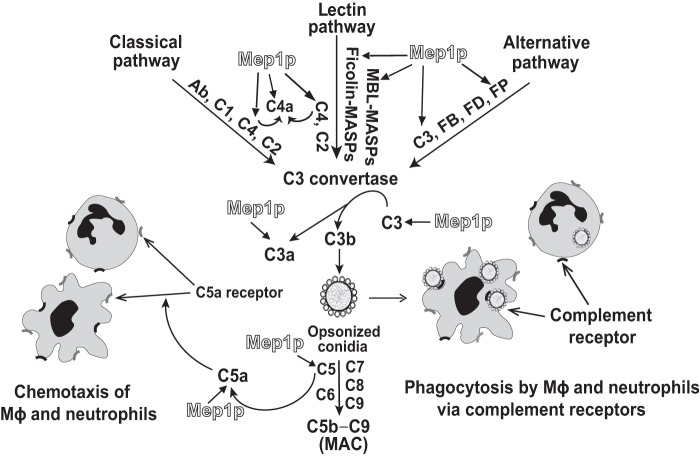Figure 10.
Proposed model for Mep1p-mediated inactivation of complement by A. fumigatus. Mep1p released from WT conidia (Fig. 1) is efficient in cleaving pattern recognition molecules such as properdin, MBL, and ficolin-1 (Fig. 4), and major complement proteins C3, C4, and C5 (Figs. 5 and 6), resulting in reduced opsonization of conidia (Fig. 8) as well as the MAC formation on their surface. Inhibition of opsonization by Mep1p results in decreased phagocytosis of conidia by macrophages (Mϕ) (Fig. 8) and is also expected to result in decreased phagocytosis by neutrophils. Mep1p also inactivates C5a (Fig. 6 and Table 1), which is a potent chemoattractant for macrophages and neutrophils and thus is expected to reduce chemotaxis of these cells. Together the data presented here indicate that Mep1p-mediated complement subversion would result in decreased clearance of conidia, which would facilitate their colonization and invasion.

